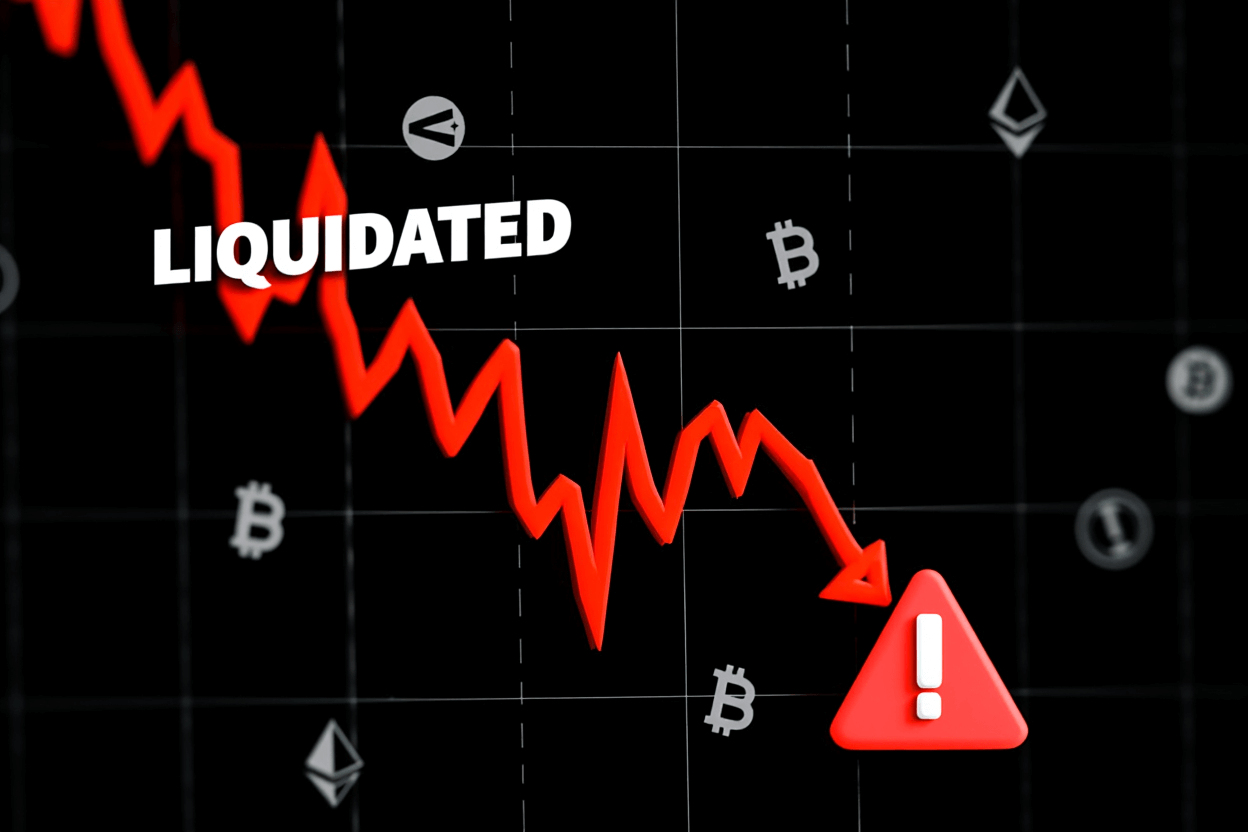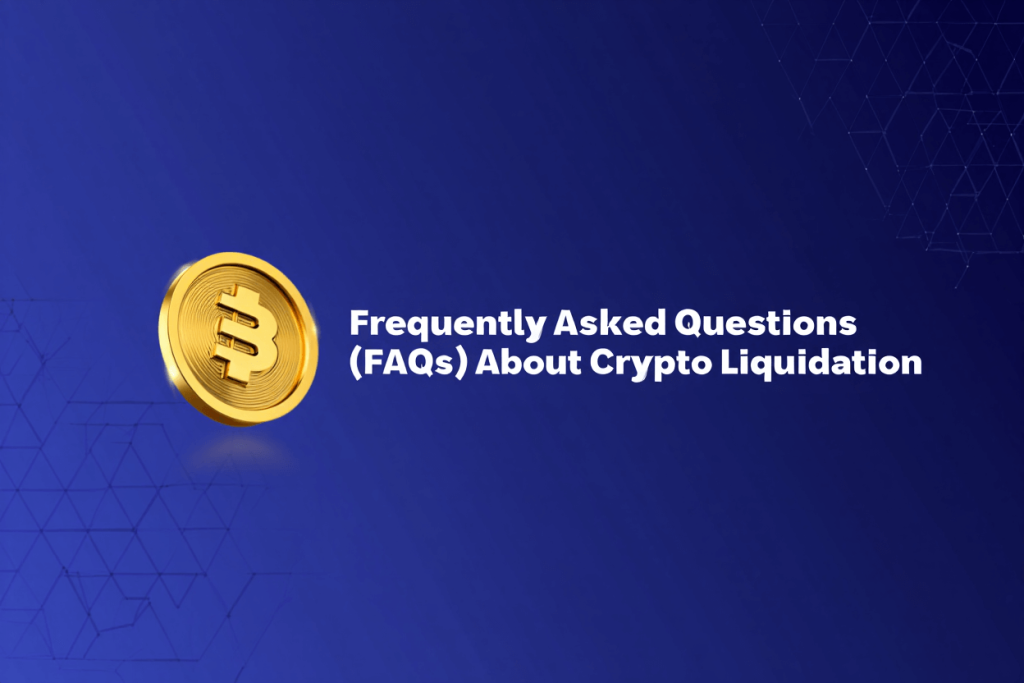Physical Address
304 North Cardinal St.
Dorchester Center, MA 02124
Physical Address
304 North Cardinal St.
Dorchester Center, MA 02124

Liquidated in crypto meaning is a critical concept for every crypto trader to understand. In the fast-moving world of crypto trading, getting liquidated is a risk every trader should understand. Plainly put, liquidation in crypto means your assets are automatically sold off by the exchange to cover a loss when the value of your position falls too far.
This is most common when you borrow funds to trade (use leverage or margin), but the value of your collateral drops below required levels. If you borrow funds to trade crypto and your assets are sold automatically to pay back those funds, that’s liquidation.
Understanding liquidation isn’t just for hardcore traders, anyone using leverage or trading on margin in crypto markets should know how quickly positions can be liquidated, especially with 2025’s continued market volatility. This guide will break down how liquidation works, when it kicks in, the types you may encounter, real-world examples, how to avoid it, and key terms you’ll see on exchanges like Binance, Coinbase, and Backpack.
Whether you’re new to crypto or looking to deepen your risk management, this comprehensive crypto liquidation guide will equip you with essential knowledge for smarter, safer trading in 2025.
Liquidated in crypto meaning happens when the price of your assets moves unfavorably, and your collateral isn’t enough to cover the position. Liquidation isn’t just a fancy word for losing money. In crypto trading, it means your assets (like Bitcoin or Ethereum) are forcibly sold off by the exchange to cover a debt or margin shortfall, protecting the lender and the platform from further losses. Here’s a simple, jargon-free explanation:

Unlike traditional finance, where margin calls might give you time to add funds, crypto exchanges often liquidate first and notify you second, making the risk more immediate and automated. Proactive monitoring and understanding the liquidation process is key for anyone trading with leverage in 2025’s increasingly dynamic crypto markets.
To explore similar concepts, check our crypto knowledge section for beginner-friendly explanations.
Voluntary liquidation happens when you, the trader, choose to close your position and sell assets, perhaps to cut losses or realize profits. This is proactive risk management, often used when signals or stop-losses are reached. Example: You sell your own altcoins after a 10% drop to avoid more loss.
Forced liquidation is what most people fear. It’s triggered when your account balance falls below the platform’s required margin, usually due to rapid price drops. In this situation, the exchange takes over and sells your assets automatically, potentially at a less favorable price. Example: Your leveraged Bitcoin position is auto-liquidated by the exchange after a sharp price move against you.
| Feature | Voluntary Liquidation | Forced Liquidation |
|---|---|---|
| Who Initiates? | User | Exchange/System |
| Control Over Timing | High | None |
| Common Trigger | Manual sell or stop-loss hit | Margin ratio breach |
| Potential Fees | Standard trading fee | Liquidation fee, slippage |
| Emotional Impact | Planned, considered | Stressful, often sudden |
Recognizing the difference between voluntary and forced liquidation helps you strategize better, turning accidental losses into informed decisions as you manage risk in DeFi, futures, or perpetual trading environments.
The core drivers of liquidation in crypto are leverage, margin, and collateral. When you trade with leverage, you’re using borrowed funds against your collateral (your own crypto or stablecoins). If the market moves against your position, your margin ratio, an indicator of account health, can drop below a maintenance margin, prompting the exchange to intervene.
Triggers for liquidation include:
Warning signs that liquidation may be looming:
| Asset | Initial Margin | Maintenance Margin | Liquidation Price |
|---|---|---|---|
| BTC/USDT (10x) | $1,000 (10%) | $800 (8%) | $36,000 (-10%) |
| ETH/USDT (5x) | $2,000 (20%) | $1,600 (16%) | $2,800 (-12%) |
| Altcoin XYZ (20x) | $500 (5%) | $400 (4%) | $2.10 (-15%) |
Being familiar with these thresholds and sequence of events helps you spot and respond to liquidation risks before they’re realized. Proactive risk management, such as setting alerts and stop-losses, is especially critical in a 2025 crypto market where volatility can swing positions from safe to liquidated in minutes.
More from this category:
Beginner Case Study: Emma opens a 10x long position in ETH/USDT with $1,000 collateral, controlling $10,000 worth of Ethereum at $3,000. ETH drops 10% to $2,700, wiping $1,000 off her leveraged position. The exchange automatically sells her position at this trigger price, Emma loses her original collateral plus a $20 liquidation fee.
Advanced Case Study: Alex manages multiple positions on a cross margin account (where collateral is shared). He holds BTC and SOL perpetual contracts. A sudden crash in SOL tanks his total margin, dragging down the margin ratio for both positions. Because Alex failed to set isolated margins or adjust risk, a sharp drop in one coin leads to forced liquidation of his whole portfolio rather than just the losing position. He ends up partially or fully liquidated on several trades.
| User | Asset | Leverage | Trigger Price | Result After Liquidation |
|---|---|---|---|---|
| Emma | ETH | 10x | $2,700 | All collateral lost, + fee |
| Alex | BTC, SOL | 5x, 20x | Various | Multiple positions closed |
These examples show how both strategy (margin mode selection) and market volatility play a crucial part in protecting, or risking, your portfolio in modern crypto trading.
The impact of being liquidated can be immediate and harsh. Beyond simply losing your collateral, forced liquidation can trigger fees, hit your confidence, and, during big crypto sell-offs, cause wider market disruptions.

Expert tip: Monitoring market conditions, especially during high volatility and news events, can help you avoid becoming just another statistic during mass liquidation waves in 2025’s fast-moving crypto landscape.
| Strategy | Effectiveness | Ease of Use | Best For |
|---|---|---|---|
| Lower Leverage | High | Easy | All traders |
| Monitor Margin | High | Medium | Active traders |
| Add Collateral | Medium | Medium | Well-funded users |
| Stop-Loss Orders | High | Easy | All traders |
| Market Awareness | Medium | Variable | Advanced users |
Below are Frequently Asked Questions (FAQs) About Crypto Liquidation:

| Term | Definition |
|---|---|
| Liquidation | Automatic selling of assets to cover a margin/debt shortfall. E.g., My position was liquidated at $25,000. |
| Margin | The collateral you deposit to open a leveraged position. I used $1,000 margin for my trade. |
| Leverage | Borrowing more funds to trade a larger position. 5x leverage means you control 5x your deposit. |
| Collateral | Assets held as security for a leveraged trade. USDT served as my collateral. |
| Stop-Loss | Order to close a position automatically at a preset loss level. Set your stop-loss below your entry. |
| Liquidation Price | The market price at which your position is auto-closed. If BTC drops to $30k my liquidation price will trigger. |
| Cross Margin | Shared collateral across multiple positions. Cross margin pools risk between trades. |
| Isolated Margin | Collateral isolated to one position only. Useful for limiting loss to a single trade. |
| Margin Call | Alert that your margin ratio is near/below required levels. A margin call means you need to add funds or risk liquidation. |
| Maintenance Margin | Minimum margin required to keep position open. Dropping below maintenance triggers liquidation. |
| Question | Short Answer | Reference Section |
|---|---|---|
| Is crypto liquidation harsher than stocks? | Often yes, liquidation is faster and less forgiving | Section 2 |
| Are there different liquidation rules per exchange in 2025? | Yes | Section 8 |
| Can you always avoid liquidation? | No, but risk can be minimized | Section 7 |
| Are auto-liquidation fees universal? | No, they vary by platform | Section 6 |
| Which assets are most vulnerable to liquidation? | Highly leveraged altcoins, volatile markets | Section 4 |
Liquidation is one of the most vital risks for anyone entering crypto trading in 2025, especially in markets dominated by high leverage and rapid volatility. By understanding what liquidation is, how the process works, types of liquidation, and how to spot (and prevent) it, you’ll be far better equipped to manage your risks and make informed decisions. Whether you’re a beginner or a seasoned trader, learning to recognize warning signs and applying best practices can help you protect your crypto portfolio, and your peace of mind, regardless of what the markets bring next.
Web Tai Chinh is a portal that updates news and information related to finance quickly and accurately, helping users have an overview before investing, clearly understanding concepts and terms related to Finance.
📞 Contact: 055 937 9204
✉️ Email: webtaichinh@gmail.com
📍 Address: 13 Ho Tung Mau, An Binh, Di An, Binh Duong